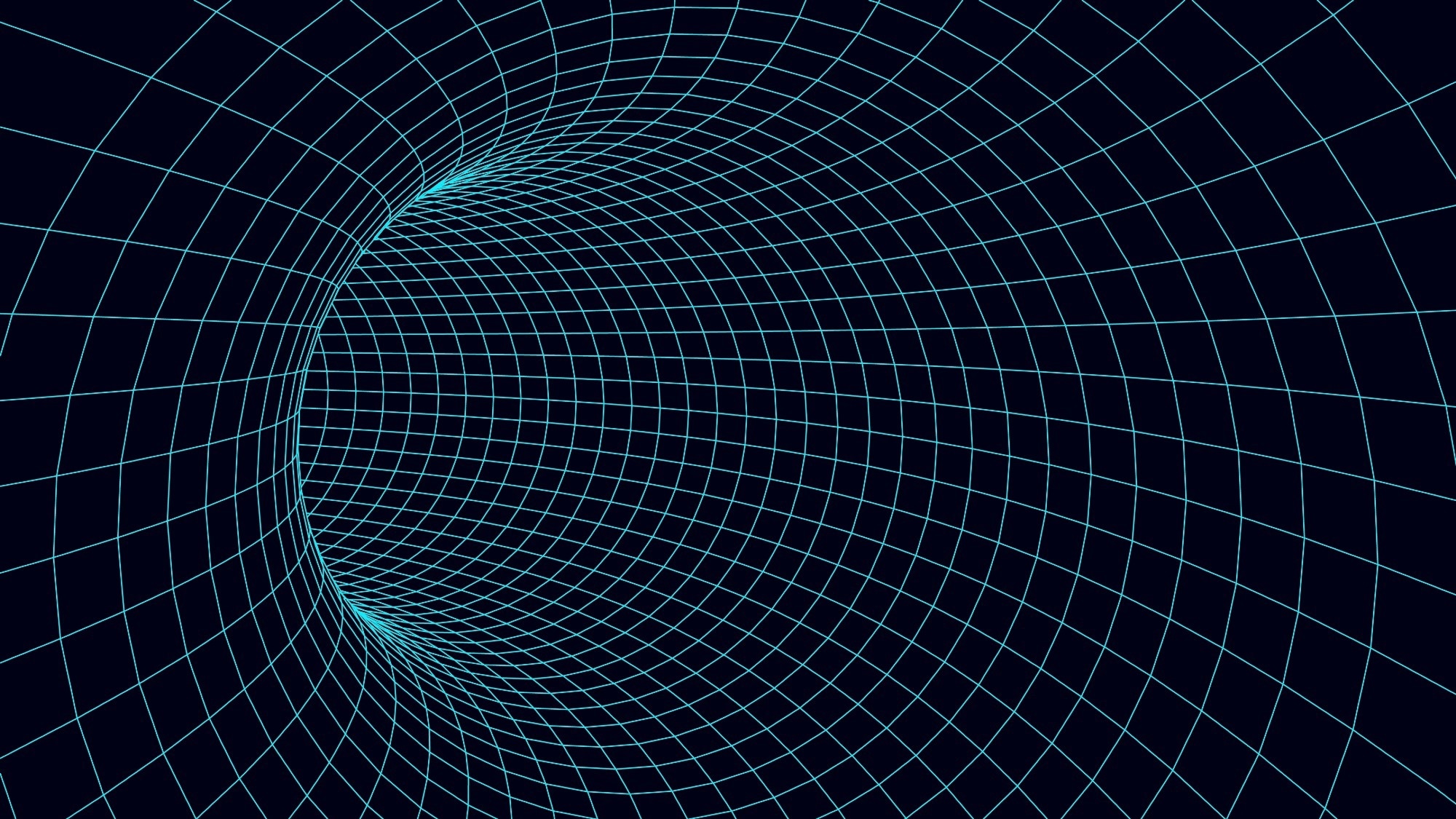In a recently published article in the journal Physics Letters B, researchers investigated the propagation of light within a theoretical model known as an elliptic wormhole (EWH), characterized by constant negative Gaussian curvature. These geometries serve as analog systems for understanding complex spacetime structures and have applications in condensed matter physics, especially in materials like graphene. The primary aim is to analyze how the unique curvature influences optical phenomena, particularly ray trajectories and wave behavior, moving beyond classical geometric optics to encompass wave optics. The study seeks to uncover the implications of such geometries for controlling light in engineered optical systems and potentially for optical analogs of gravitational effects.

Image Credit: Lin1800/Shutterstock.com
Background
The research is situated at the intersection of optics and curved spacetime physics, drawing inspiration from general relativity and its theoretical constructs such as wormholes and black holes. Surfaces exhibiting constant negative Gaussian curvature, like the EWH, are utilized as optical analogs of curved spacetime, revealing how geometry impacts light behavior. The paper builds on earlier research into wormhole geometries and their optical counterparts, highlighting how negative curvature plays a key role in creating repulsive potential effects that alter the trajectory of light waves. It also points to recent progress in lab-based simulations of gravitational phenomena, such as optical waveguides that replicate gravitational lensing or produce analogs of Hawking radiation, as further evidence of the importance of exploring light behavior in curved geometries. These efforts have implications not only for advancing fundamental physics but also for practical developments in optical engineering.
The Current Study
In this study, the authors examined how light waves propagate within a curved geometric structure known as an elliptic wormhole (EWH), defined by its constant negative curvature. Their approach integrates both classical and wave-based analysis methods to explore how curvature affects the behavior of light.
Initially, a geometric framework was utilized to analyze the trajectories of light rays, known as geodesics. This involved using a Lagrangian formalism adapted for curved surfaces, which allowed the authors to derive equations describing the paths light would take within the EWH background. By solving these equations numerically, the study mapped out light trajectories under various initial conditions and parameters, with a focus on how waves behave both near the wormhole’s core and at greater distances.
For the wave dynamics, the authors solved the Helmholtz equation, which governs wave behavior on curved surfaces. To simplify the analysis, they applied a transformation that recasts the equation into a more tractable form resembling the Schrödinger equation. This approach enabled the use of numerical techniques to study wave solutions and compute effective potentials that determine whether waves are confined, reflected, or transmitted by the geometry.
Key parameters such as the curvature radius and the angular momentum of the waves were varied to explore different behavioral regimes. The results were visualized through plots of wave intensities and trajectories, offering clear insights into how curvature influences wave confinement and propagation. This methodology provides a robust framework for understanding light behavior in curved geometries, with potential applications in the design of optical systems inspired by gravitational physics.
Results and Discussion
The analysis reveals that the constant negative Gaussian curvature induces significant effects on light propagation. Ray trajectories show strong repulsive behavior near the center of the EWH, effectively pushing light away from the core region. This leads to the formation of optical barriers that influence how beams bend and focus. Wave solutions indicate that certain modes become trapped near the center due to the well-like effective potential created by the geometry. These trapped modes tend to oscillate within the central region without escaping, highlighting a form of spatial confinement driven solely by curvature. Conversely, other modes with sufficient energy or different angular momentum can escape the central trapping zone and propagate outward, behaving almost as free waves at large distances. The spatial variation of the refractive index plays a crucial role; it can become superluminal or evanescent depending on the position and frequency, leading to complex optical landscapes where wave energy can be localized or transmitted depending on the local geometry. This nuanced behavior underscores the importance of geometric effects in designing optical devices or experiments aiming to mimic gravitational phenomena, such as lensing or horizon-like structures, using engineered curved surfaces.
Conclusion
The study provides a comprehensive examination of both ray and wave optics within a negatively curved geometric framework reminiscent of wormholes. It shows how geometry strongly influences light behavior, leading to trapping, reflection, and refraction phenomena that differ from those predicted by Euclidean models. The results highlight the potential to harness these geometric effects for innovative optical applications, such as wave confinement, beam shaping, and simulating gravitational lensing in laboratory settings. Additionally, the detailed analysis of the refractive index’s spatial and frequency dependence offers a foundation for future work aimed at precise control of light in curved optical media. The research emphasizes that understanding the interaction between geometry and optics could lead to novel photonic devices inspired by relativistic phenomena, with relevance to both fundamental physics and optical engineering.
Sources:
Journal Reference
Gurtas Dogan S., Guvendi A., et al. (2025). Light propagation in curved wormhole geometries. Physics Letters B, 868, 139626. DOI: 10.1016/j.physletb.2025.139626, https://www.sciencedirect.com/science/article/pii/S0370269325003879